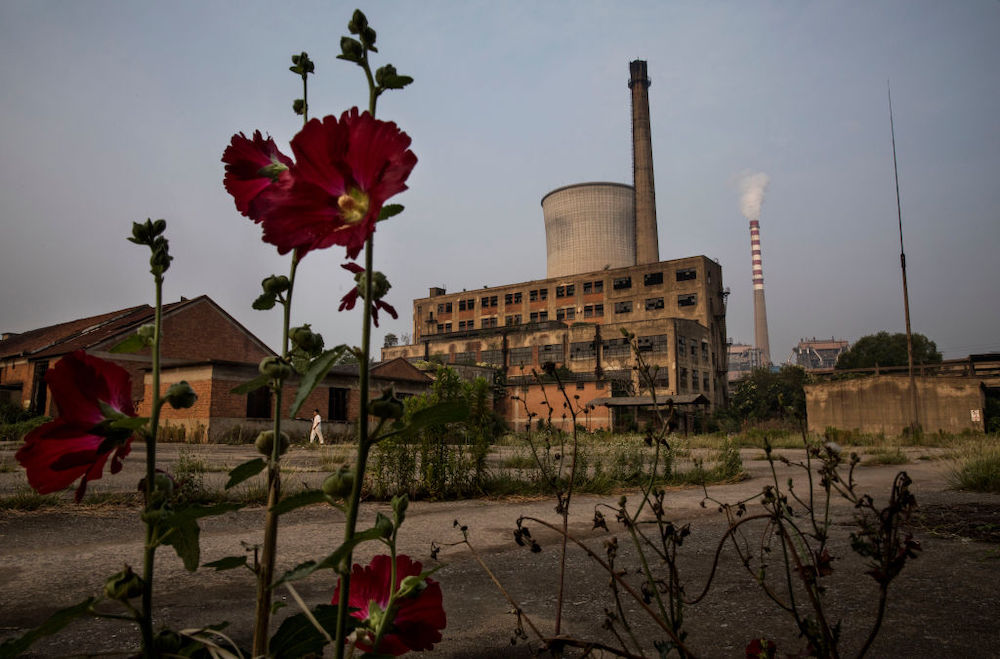- Global coal capacity grew last year grew for the first time since 2015
- At the same time, coal plants retired at an accelerating pace in the U.S. and Europe, coal use dropped overall and capacity utilization fell.
- Coal burning will have to be slashed 80% by 2030 in order to meet the goal of keeping global warming below 1.5°C, the Intergovernmental Panel on Climate Change said.
Global coal capacity grew last year for the first time since 2015, thanks to an upsurge in plant construction in China that outweighed shutdowns elsewhere.
Coal-burning capacity grew by 34.1 gigawatts in 2019, according to “Boom and Bust 2020: Tracking the Global Coal Plant Pipeline,” a report by the Sierra Club, Global Energy Monitor, Greenpeace and the Centre for Energy and Clean Air. While the authors lamented the growth in China, they also noted signs that the world is moving away from coal — the biggest cause of manmade greenhouse gas emissions — such as the accelerating decline in capacity elsewhere, and a drop in the amount of power generated coal worldwide.
They also noted that plants aren’t running full bore.
“The good news is that capacity doesn’t equal emissions,” Rachel Cleetus, climate and energy program policy director for the Union of Concerned Scientists, told Karma. “We have seen a lot of unused capacity. Plants are running at under 50% of capacity much of the time.”
The rise in China’s coal capacity is a result of a surge in permit approvals between 2014 and 2016, the authors said. The country’s power industry is advocating for a capacity target in the nation’s next five-year plan that would allow for 200 more coal-fired plants by 2025. This comes as many of the new plants sit idle or underused, with 40% of the capacity that was added last year being relegated to emergency back-up status, according to the report.
“For China, it is still unclear whether proposals to build new plants will be approved,” Han Chen, international energy policy manager at the Natural Resources Defense Council, told Karma. “And given the low average utilization rate of existing coal plants in China, it’s unclear how much new added coal capacity would impact total coal consumption annually.”
The U.S. retired 16.5 gigawatts of coal capacity last year, the second-highest total ever, and more than any other country in 2019. Despite President Trump’s pledge to help the coal industry, plant closures have accelerated during his administration. Coal power generation dropped 16% in 2019, compared with the prior year.
“Trying to roll back coal regulations or provide coal plants with subsidies will at best slightly prolong the inevitable,” Christine Shearer, lead author of the study and director of Global Energy Monitor’s Coal Program, told Karma. “Coal power retirements have actually increased 67% under Trump compared to Obama.”
The European Union retired 7.5 million gigawatts of capacity in 2019, with the U.K. and Germany leading the way. The decline should continue because 14 EU members have promised to phase out coal power by 2030, and Germany has agreed to do the same by 2038, the report said. Coal power generation in the EU tumbled 24% last year compared with 2018.
Clean, renewable energy will continue to expand because of falling costs, and continue to make up a greater share of the world’s total power, according to the report. The authors also pointed to widening curbs on coal investment by more than 126 “globally significant” banks and insurers and promises to phase out coal by 33 national governments as reasons for optimism.
“As wind and solar power further decrease in costs, the outlook is bleak for coal,” Shearer said. “We are already seeing this play out in the U.S. and EU, as coal increasingly loses out to lower-cost renewables.”
Photo by Kevin Frayer/Getty Images






















